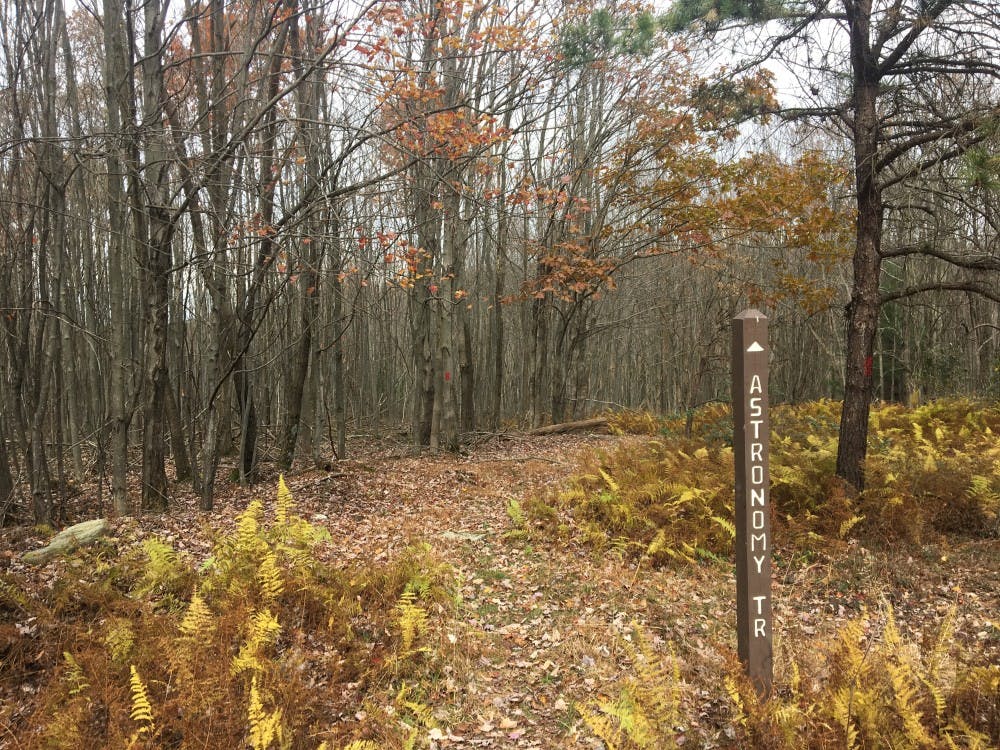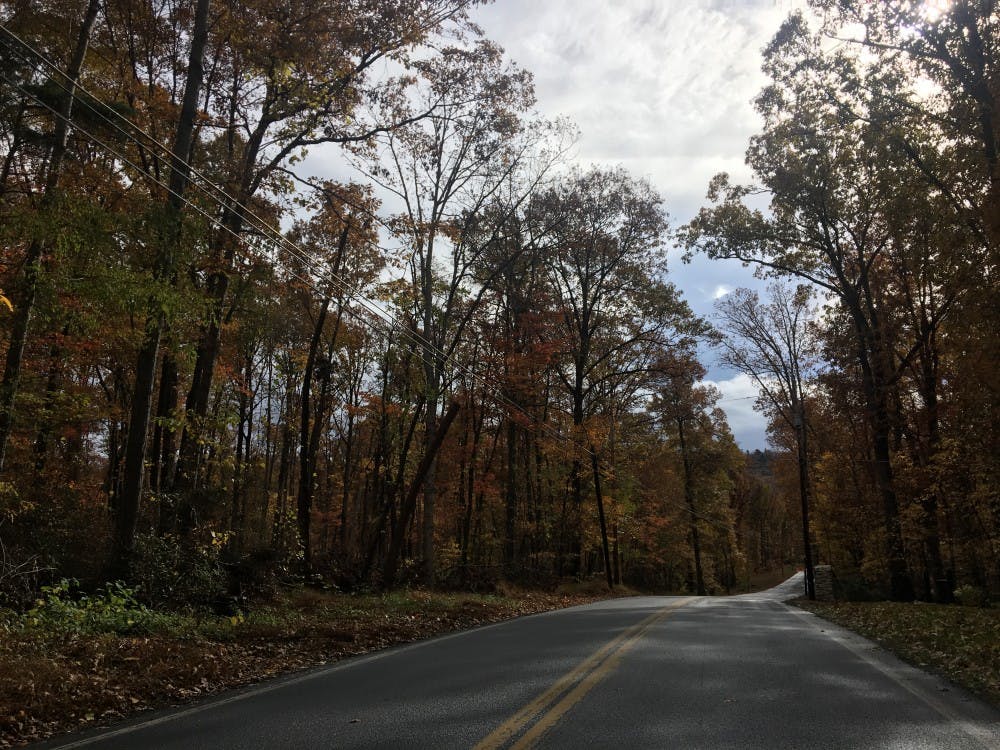Maybe you’ve seen some variation of that evolution cartoon — various early humanoid caricatures depicted on the evolutionary path from left to right, culminating in modern man and hunched awkwardly over a computer. The point is clear: the human body isn’t very well adapted to sitting around all day. We need to move.
It’s probably obvious that physical activity helps prevent chronic body ailments such as obesity (which is a risk factor in just about everything you don’t want to happen to you), but also heart disease, diabetes, cancer and early death.

The end of the two-mile long Astronomy Trail filled with scenic fall foliage for cyclists to appreciate on they ride.
Physical activity is also good for our mental health. Exercise is excellent treatment for ADHD. It tends to ward off long-term mental maladies such as dementia. Exercise decreases the likelihood of developing depression and anxiety, with some research suggesting that exercise is at least as good a treatment for anxiety as pharmacological interventions.
Everyone can benefit from a walk, but maybe students need it more than most.
A 2013 study of college students found that 57 percent of women and 40 percent of men experienced “overwhelming anxiety;” 33 percent of women and 27 percent of men reported severe depression. And a 2012 study reported that 2–8 percent of college students, and 25 percent of students that receive disability services are diagnosed with ADHD.
What’s more, where you exercise makes a difference. A 2015 study found that people who walked for 90 minutes in the woods, versus city streets, showed decreased activity in a region of the brain associated with depression.
So, take a hike.
Astronomy Trail in Michaux State Forest, as far as I’m aware, is the closest marked trail to campus. (It’s also misnamed. Most maps, and all the mountain bikers I know, refer to the trail as Scientology. But the forest service people named it Astronomy. And, a few years ago, put up signs at either end indicating as much.)
Google “Milesburn and Baltimore.” That will get you there. It’s a 5.4-mile drive/walk/bike ride from Old Main. Turn off the main road onto the dirt road. This is Milesburn Road. There’s a pullout immediately to your right. Park there.
Just up the road a couple dozen feet from the pullout there is a trail to the left. It’s not super well-trod, so if you’re not looking you could easily miss it. But there is a sign — four feet of painted post sticking out of the ground with “ASTRONOMY TR” printed in white letters down its length.
The trail ascends quickly — 430 feet in one half mile — but after that first half mile the trail levels and you’ll find yourself along a ridge with lovely views of neighboring mountain ridges to both the left and right. That is, if you look up. Keep your eyes focused close by and there’s also plenty of cool stuff to see. You know, trees and leaves and rocks and things. It’s all there.
Right now, the foliage is just the other side of turned. But there is still so much variation and color. Listen to the leaves crunch under your feet. This has always been, to me, a highlight of nature’s soundtrack. Look for the little red maple leaves, the ones you might find on a tree as tall as your knee. These are a delicate treasure.
Treasure is to be found all over, for those who are looking. Because here, just six miles from campus, and you’re in the woods. The anxiety and depression…feel it just sort of slough off. The world, your life, it all comes into a little better focus. These woods can heal. These woods are kind of magic that way.
…
Notes: Astronomy Trail is 2.0 miles end-to-end. Minimum elevation: 1,137’. Maximum elevation: 1,778’. Make a 4.2-mile loop by turning right on Gilbert Road (an old jeep trail) then right again on Milesburn (a proper dirt road). Turn left on Gilbert Road and in a half mile you’ll come to Ridge Road (at this point, elevation: 1,926’), a drivable dirt road. Another 0.2 miles and you’ll reach the Appalachian Trail.


The Slate welcomes thoughtful discussion on all of our stories, but please keep comments civil and on-topic. Read our full guidelines here.